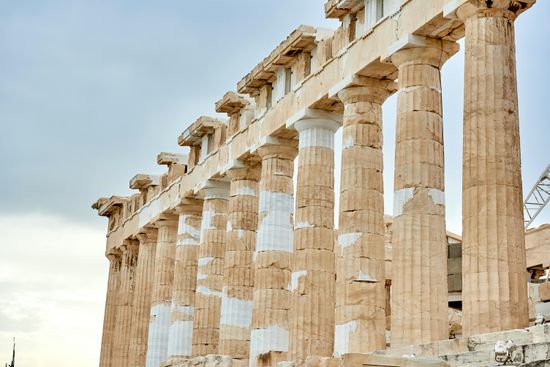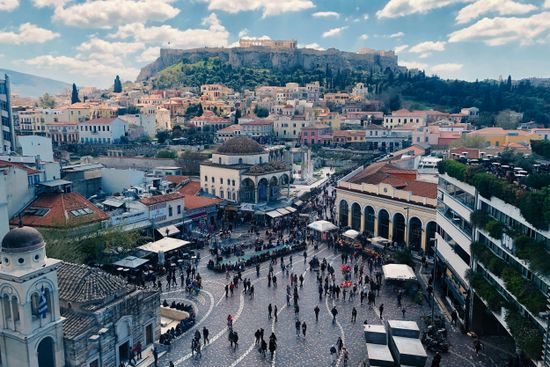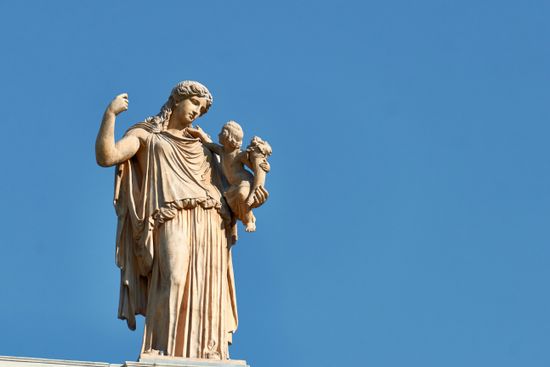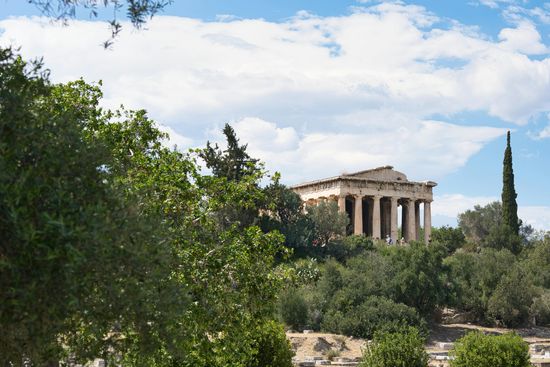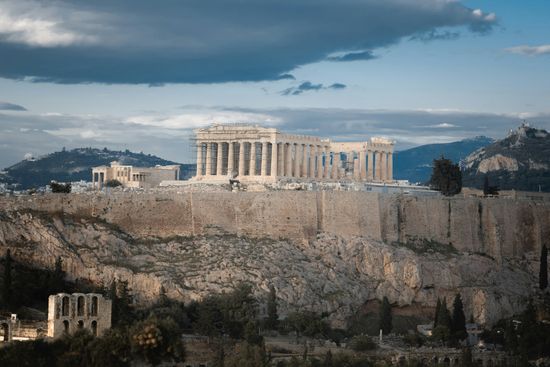
Temple of Olympian Zeus
The Temple of Olympian Zeus (also known as the Olympieion) is one of the most significant and grand ancient ruins in Athens, Greece. The construction of the Temple of Olympian Zeus began in the 6th century BCE during the rule of the Athenian tyrant Peisistratos. However, the project was abandoned due to political turmoil and lack of funds. The temple was later revived by several leaders, including the Hellenistic ruler Antiochus IV Epiphanes in the 2nd century BCE, who enlisted the Roman architect Cossutius to complete it. Finally, the Roman Emperor Hadrian completed the temple in 132 CE, almost 650 years after its initial conception. Hadrian dedicated it to Zeus Olympios, the king of the gods. It was one of the largest temples in the ancient world, even larger than the Parthenon. It served as a center for the worship of Zeus and was part of the Panathenaic Festival, where grand processions took place in honor of Athena and other gods. The site also became a focal point during the Roman period, especially under Hadrian, who was known for his admiration of Greek culture. He built a grandiose arch nearby (Hadrian's Arch) to commemorate the temple and mark the boundary between the old and new parts of Athens.
